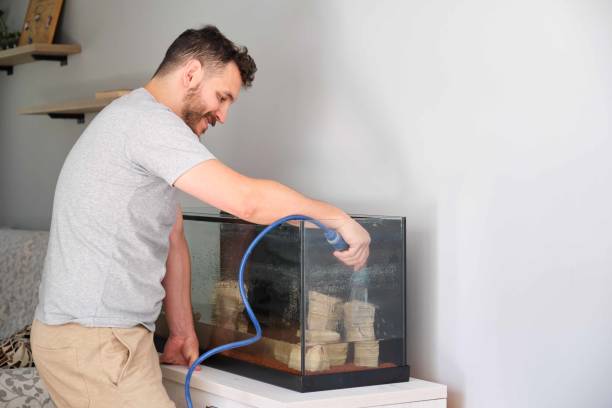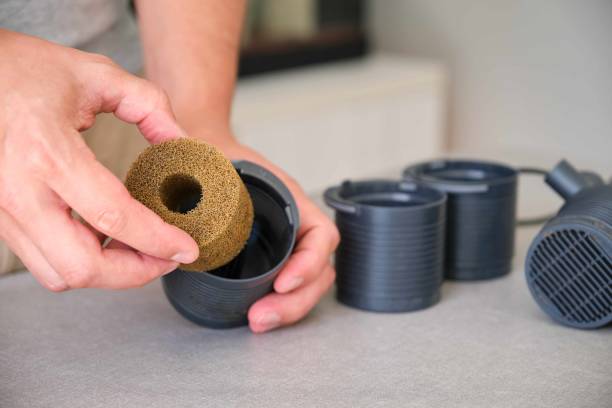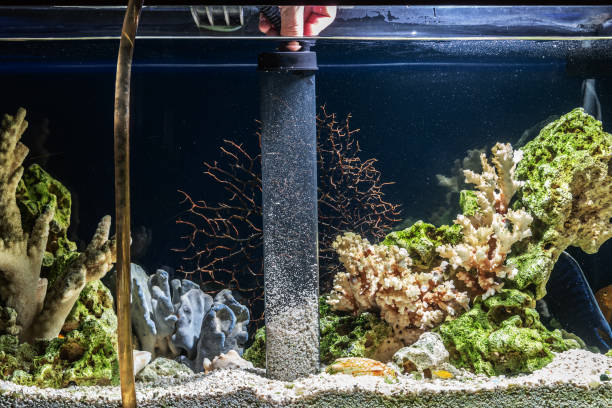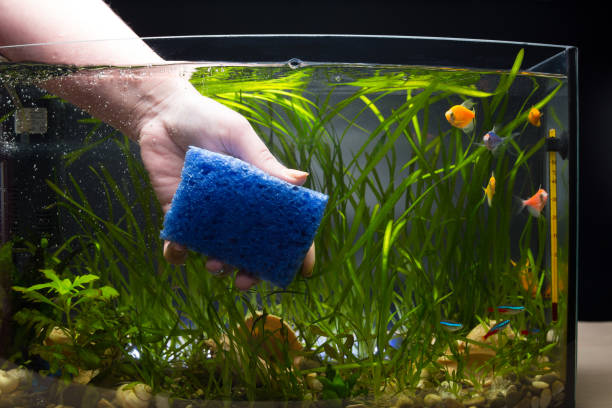Tips For Maintaining a Clean Fish Tank
Fish waste, uneaten food, shed scales, and dead bits of plants can build up in the gravel, making it look dirty. Vacuuming the tank gravel regularly helps remove debris, brightens the water, and keeps it healthier.
Scrub decorations such as rocks, logs, castles and sunken ships with an algae scraper to keep them clean. Avoid cleaning them with soap, as it can be difficult to fully rinse away and can be harmful to your fish.
Vacuum the Substrate
The substrate of your fish tank can collect a lot of waste material, including excess food and uneaten fish waste. Using a gravel vacuum helps remove this detritus and keeps it from building up and contaminating the water. Vacuuming your gravel is also a great way to sift through the substrate for any signs of algae, which can be caused by too much or too little light in your tank.

A gravel vacuum is a simple tool that works similar to a syphon, and it’s an essential part of your cleaning kit. Just wave the end of the tube over the top of the substrate, and the sand and gravel will be sucked up into the tube along with any waste materials. Then, the tube can be pulled up from the tank and the dirty water will drain out into a bucket where you’ll dump in clean, dechlorinated tap water.
When using a gravel vacuum, make sure you don’t clean the entire tank all at once – about a third should be enough. Cleaning too much at one time will disturb your filtration system and can cause stress in your fish, as well as potentially remove many of the good bacteria that live in the substrate. It’s also important to note that vacuuming the substrate is not a substitute for other forms of biological filtration, such as matting, fluidized beds, sponges, bioballs, etc.
Clean the Filter
Clean the filter regularly, especially if you have an algae-growing tank. Remove the filter from the aquarium and place it in a bucket of conditioned water (see the last step). If you have a canister, hang-on-back or power sponge type filter, use a brush, sponge or bit of filter floss to swish around and wash the media and impeller in the bucket of old tank water that was removed from the tank. Rinse and squeeze out any filter pads or spongy material, too.
If you have an algae scraping tool, like API’s Extra-long Algae Scraper for Acrylic Aquariums, you can also use it to clean the glass walls of your tank — just be careful not to scratch or damage the acrylic. You should also rinse the plastic and metal decor to prevent it from accumulating debris or smudges, and to keep it looking fresh.

Generally, you should only have to do a full tank cleaning (going through all of these steps) once a month, plus change 15-25% of the water every other week. This helps to reduce nitrate and phosphate levels, and avoid stressing your fish with drastic changes in water temperature and pH. If you have an algae-growing tank, you may need to clean more often and perform larger water changes to help control nutrient build-up.
Clean the Lights
Using a clean algae pad (available at pet stores) scrub the glass. This will prevent harsh detergents and cleaning chemicals from getting into the tank and damaging the delicate fish gills. Be sure to wear rubber gloves. This will help protect your hands and arms from the detergents that can cause irritation if you touch them. It is also better to use a magnetic glass cleaner than a sponge or scrubber to avoid contaminating the tank with your fingers.
Next, remove any large rocks and decorations from the tank. This is a good time to perform a 25% partial water change. Siphon out the dirty water and replace it with fresh, conditioned (chilled) tap water.

If you have stubborn algae on any of the tank decor, don’t use soaps – they are extremely harmful to the fish. Instead, prepare a solution of 10% bleach and 90% water and soak the decor in it for 10-15 minutes. Rinse well and scrub if necessary. Then rinse again with fresh, cold water.
Finally, scrape off any remaining algae and wash the aquarium walls and décor with fresh water. Be sure to use a plastic scraper designed for aquariums and not razor blades, which can scratch the tank. It’s also important to use a cleaning brush that is safe for the material of your tank.
Clean the Tank
Depending on the tank size, number of fish and type of filter system, the frequency of cleaning will vary. However, a general guideline is to do a full tank clean once a month and change 15-25% of the water on a weekly basis (more frequent changes will help reduce nitrate and phosphate levels).
Vacuum the Gravel
Fish feces, shed scales, uneaten food and dead bits of plants will all settle in the gravel. Vacuuming the gravel each week will remove most of this waste and make the water look a lot cleaner.
Scrub the Glass
The tank’s glass should be cleaned on a regular basis with a sponge that is only used for the aquarium and not other purposes. This will avoid contaminating the fish’s water with detergents or other chemicals that can disrupt the balance of your aquarium’s ecosystem.
Before beginning to clean the tank, turn off the filtration and heater. Next, remove any decorations from the aquarium and place them on a towel or somewhere safe to protect them from splashes. If you have an algae scraper, this is the time to use it, but be careful not to scratch the glass or acrylic of the tank.

